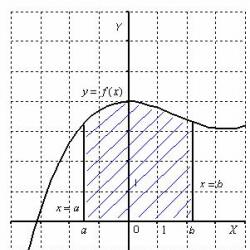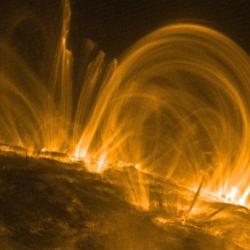Basic properties of the sun. the sun is like a star. Luminosity of a star The true characteristic of a star’s radiation power is its luminosity, i.e., the total energy that the star emits per unit time
Star luminosity name the total power of electrical radiation from a star leaving it in a cosmic location.
Luminosity of the Sun is 3.827·1026 W (in the SI system) or 3.827·1033 erg/sec (in the GHS system). Astrologers use the luminosity of the Sun as a unit of measurement for the luminosity of stars and galaxies.
During the year the sun shines into space energy 1.2·1034 J = 3.4·1018 terawatt-hours. Once per second, the mass of the Sun is miniaturized by 4.3 million tons due to the equivalence of mass and energy (E = mc2). Over the hypothetical 4.5 billion years of its existence, the Sun lost 6·1026 kg, which corresponds to 0.03% of the mass of the Sun.
Gets to Earth approximately 2 billionths of this energy, of which ~37% (Earth's albedo) is immediately reflected back into space. The Earth absorbs about 1 billion terawatt-hours of solar energy per year. For comparison, global electricity generation is about 20 thousand terawatt-hours per year, in other words, 0.002% of solar energy.
Sources:
Or 3.827 10 33 erg/s.
Constant calculation
The luminosity of the Sun can be calculated by measuring the amount of energy falling per unit time onto a unit area located in the vicinity of the Earth (at a distance of 1 au from the Sun) and turned perpendicular to the direction of incidence of solar rays. This energy flow is called the solar constant, it is equal on average A= 1361 W/m²(variations are mainly associated with periodic changes in solar activity, they amount to about 0.1%). Area of a sphere with radius R= 1 a. e. = 149,597,870,691 m equal to S= 4π R 2 ≈ 2.8123 10 23 m 2; therefore, this sphere is crossed by an energy flow equal to AS= 3.827 10 26 W.
Another method for calculating solar luminosity is based on the fact that the Sun is, to a high degree of accuracy, an absolute black body. As a result, the amount of energy emitted per second from a unit surface area of the Sun depends only on its temperature T, according to the Stefan-Boltzmann law: L ☉ = σ T 4× S ☉ , where σ is the Stefan-Boltzmann constant, S☉ = 4π - surface area of the Sun.
see also
Links
- I.-J. Sackmann, A. I. Boothroyd (2003). "Our Sun" V. A Bright Young Sun Consistent with Helioseismology and Warm Temperatures on Ancient Earth and Mars." The Astrophysical Journal 583 (2): 1024-1039.
Wikimedia Foundation.
- 2010.
- Turgot, Anne Robert Jacques
Dalla Torre, Karl Wilhelm von
Luminosity of the Sun See what “Solar luminosity” is in other dictionaries:
- Solar luminosity, a unit of luminosity commonly used by astronomers to represent the luminosity of stars. Equal to the luminosity of the Sun, which is 3.827 × 1026 W or 3.827 × 1033 Erg/s. Calculation of the constant You can calculate the amount of solar ... Wikipedia Solar mass
- Solar mass, or the mass of the Sun, is an off-system unit of mass measurement used in astronomy to express the mass of stars and other astronomical objects (for example, galaxies). It is denoted by and is equal to the mass of the Sun: = (1.98892 ± 0 ... Wikipedia Solar Activity
- The last 30 years of solar activity. Solar activity is a complex of phenomena and processes associated with the formation and decay of strong magnetic fields in the solar atmosphere. Soda... Wikipedia Solar constant
- Solar constant is the total flux of solar radiation passing per unit time through a unit area oriented perpendicular to the flux, at a distance of one astronomical unit from the Sun outside the earth’s atmosphere. According to ... Wikipedia Star
- This term has other meanings, see Star (meanings). Pleiades Star celestial body in which they are walking, walking or will walk... Wikipedia
Star (astronomy) Stars
- For other meanings of the word “star”, see the article Star (meanings). Pleiades, star cluster A star is a celestial body in which nuclear reactions occur, have occurred, or will occur. But most often a star is called a celestial body in which they go... ... Wikipedia Future of the Earth
- The scorched Earth after the Sun enters the red giant phase as imagined by the artist... Wikipedia- In astronomy, solar radius is a unit of length used to express the size of stars. It is equal to the radius of the Sun and is = 6.960·108 m = 0.004652 astronomical units. The radius of the Sun is approximately equal to 109 radii of the Earth. See also... ... Wikipedia
Standard physical characteristics of an asteroid- For most numbered asteroids, only a few physical parameters are known. Only a few hundred asteroids have their own pages on Wikipedia, which contain the name, circumstances of discovery, table of orbital elements... ... Wikipedia
The closest star to us is, of course, the Sun. The distance from the Earth to it, according to cosmic parameters, is very small: sunlight travels from the Sun to the Earth in only 8 minutes.
The Sun is not an ordinary yellow dwarf, as previously thought. This is the central body of the solar system, around which the planets revolve, with a large number of heavy elements. This is a star formed after several supernova explosions, around which a planetary system was formed. Due to its location close to ideal conditions, life arose on the third planet Earth. The Sun is already five billion years old. But let's figure out why it shines? What is the structure of the Sun and what are its characteristics? What does the future hold for him? How significant an impact does it have on the Earth and its inhabitants? The Sun is a star around which all 9 planets of the solar system, including ours, revolve. 1 a.u. (astronomical unit) = 150 million km - the same is the average distance from the Earth to the Sun. The Solar System includes nine major planets, about a hundred satellites, many comets, tens of thousands of asteroids (minor planets), meteoroids, and interplanetary gas and dust. At the center of it all is our Sun.
The sun has been shining for millions of years, which is confirmed by modern biological research obtained from the remains of blue-green-blue algae. If the temperature of the surface of the Sun changed by even 10%, all life on Earth would die. Therefore, it is good that our star evenly radiates the energy necessary for the prosperity of humanity and other creatures on Earth. In the religions and myths of the peoples of the world, the Sun has always occupied the main place. For almost all peoples of antiquity, the Sun was the most important deity: Helios - among the ancient Greeks, Ra - the sun god of the ancient Egyptians and Yarilo among the Slavs. The sun brought warmth, harvest, everyone revered it, because without it there would be no life on Earth. The size of the Sun is impressive. For example, the mass of the Sun is 330,000 times the mass of the Earth, and its radius is 109 times greater. But the density of our star is small - 1.4 times greater than the density of water. The movement of spots on the surface was noticed by Galileo Galilei himself, thus proving that the Sun does not stand still, but rotates.
Convective zone of the Sun
The radioactive zone is about 2/3 of the internal diameter of the Sun, and the radius is about 140 thousand km. Moving away from the center, photons lose their energy under the influence of collision. This phenomenon is called the phenomenon of convection. This is reminiscent of the process that occurs in a boiling kettle: the energy coming from the heating element is much greater than the amount that is removed by conduction. Hot water close to the fire rises, and colder water sinks. This process is called convention. The meaning of convection is that denser gas is distributed over the surface, cools and again goes to the center. The mixing process in the convective zone of the Sun is carried out continuously. Looking through a telescope at the surface of the Sun, you can see its granular structure - granulations. It feels like it's made of granules! This is due to convection occurring beneath the photosphere.
Photosphere of the Sun
A thin layer (400 km) - the photosphere of the Sun, is located directly behind the convective zone and represents the “real solar surface” visible from Earth. Granules in the photosphere were first photographed by the Frenchman Janssen in 1885. The average granule has a size of 1000 km, moves at a speed of 1 km/sec and exists for approximately 15 minutes. Dark formations in the photosphere can be observed in the equatorial part, and then they shift. Strong magnetic fields are a distinctive feature of such spots. And the dark color is obtained due to the lower temperature relative to the surrounding photosphere.
Chromosphere of the Sun
The solar chromosphere (colored sphere) is a dense layer (10,000 km) of the solar atmosphere that lies directly behind the photosphere. The chromosphere is quite problematic to observe due to its close location to the photosphere. It is best seen when the Moon covers the photosphere, i.e. during solar eclipses.

Solar prominences are huge emissions of hydrogen, resembling long luminous filaments. The prominences rise to enormous distances, reaching the diameter of the Sun (1.4 mm km), move at a speed of about 300 km/sec, and the temperature reaches 10,000 degrees.
The solar corona is the outer and extended layers of the Sun's atmosphere, originating above the chromosphere. The length of the solar corona is very long and reaches values of several solar diameters. Scientists have not yet received a clear answer to the question of where exactly it ends.

The composition of the solar corona is a rarefied, highly ionized plasma. It contains heavy ions, electrons with a helium core and protons. The temperature of the corona reaches from 1 to 2 million degrees K, relative to the surface of the Sun.
The solar wind is a continuous outflow of matter (plasma) from the outer shell of the solar atmosphere. It consists of protons, atomic nuclei and electrons. The speed of the solar wind can vary from 300 km/sec to 1500 km/sec, in accordance with the processes occurring on the Sun. The solar wind spreads throughout the solar system and, interacting with the Earth's magnetic field, causes various phenomena, one of which is the northern lights.
Characteristics of the Sun
Mass of the Sun: 2∙1030 kg (332,946 Earth masses)
Diameter: 1,392,000 km
Radius: 696,000 km
Average density: 1,400 kg/m3
Axis tilt: 7.25° (relative to the ecliptic plane)
Surface temperature: 5,780 K
Temperature at the center of the Sun: 15 million degrees
Spectral class: G2 V
Average distance from Earth: 150 million km
Age: 5 billion years
Rotation period: 25.380 days
Luminosity: 3.86∙1026 W
Apparent magnitude: 26.75m
Stars eject a huge amount of radiation into outer space, almost entirely represented by different types of rays. The total radiation energy of a star emitted over a period of time is the luminosity of the star. The luminosity index is very important for the study of luminaries, since it depends on all the characteristics of the star.
The first thing worth noting when talking about the luminosity of a star is that it can easily be confused with other parameters of the star. But in practice everything is very simple - you just need to know what each characteristic is responsible for.
A star's luminosity (L) primarily reflects the amount of energy emitted by the star - and is therefore measured in watts, like any other quantitative characteristic of energy. This is an objective quantity: it does not change when the observer moves. This parameter is 3.82 × 10 26 W. The brightness indicator of our star is often used to measure the luminosity of other stars, which is much more convenient for comparison - then it is marked as L ☉, (☉ is the graphic symbol of the Sun.)


Obviously, the most informative and universal characteristic among the above is luminosity. Since this parameter displays the intensity of the star's radiation in the most detail, it can be used to find out many characteristics of the star - from size and mass to intensity.
Luminosity from A to Z
It doesn’t take long to search for the source of radiation in a star. All the energy that can leave the star is created in the process of thermonuclear fusion reactions in. Hydrogen atoms, merging under gravitational pressure into helium, release enormous amounts of energy. And in more massive stars, not only hydrogen, but also helium “burns” - sometimes even more massive elements, even iron. Then the energy obtained is many times greater.
The amount of energy released during a nuclear reaction directly depends on - the greater it is, the more gravity compresses the core of the star, and the more hydrogen is simultaneously converted into helium. But it is not nuclear energy alone that determines the luminosity of a star - after all, it must also be emitted outward.
This is where the radiation area comes into play. Its influence in the process of energy transfer is very great, which is easily verified even in everyday life. An incandescent lamp, the filament of which heats up to 2800 °C, will not significantly change the temperature in the room after 8 hours of operation, but a regular battery with a temperature of 50–80 °C will be able to warm the room to a noticeable stuffiness. Differences in efficiency are caused by differences in the amount of surface area emitting energy.
The ratio between the area of a star's core and its surface is often commensurate with the proportions of a light bulb filament and a battery - the diameter of the core can be only one ten-thousandth of the total diameter of the star. Thus, the luminosity of a star is seriously affected by the area of its emitting surface - that is, the surface of the star itself. The temperature here turns out to be not so significant. The incandescence of the star's surface is 40% less than the temperature of the Sun's photosphere - but due to its large size, its luminosity exceeds the Sun's luminosity by 150 times.
It turns out that in calculating the luminosity of a star, the role of size is more important than the energy of the core? Not really. Blue giants with high luminosity and temperature have similar luminosities to red supergiants, which are much larger. In addition, the most massive and one of the hottest stars has the highest brightness of all known stars. Until a new record holder is discovered, this puts an end to the debate about the most important parameter for luminosity.
Use of luminosity in astronomy

Thus, luminosity fairly accurately reflects both a star's energy and its surface area - which is why it is included in many classification charts used by astronomers to compare stars. Among them, it is worth highlighting the diagram
The characteristics of celestial bodies can be very confusing. Only stars have apparent, absolute magnitude, luminosity and other parameters. We will try to figure it out with the latter. What is the luminosity of stars? Does it have anything to do with their visibility in the night sky? What is the luminosity of the Sun?
Nature of stars
Stars are very massive cosmic bodies that emit light. They are formed from gases and dust as a result of gravitational compression. Inside stars there is a dense core in which nuclear reactions occur. They contribute to the glow of stars. The main characteristics of luminaries are spectrum, size, brilliance, luminosity, and internal structure. All these parameters depend on the mass of a particular star and its chemical composition.
The main “designers” of these celestial bodies are helium and hydrogen. In smaller quantities relative to them, they may contain carbon, oxygen and metals (manganese, silicon, iron). Young stars have the largest amounts of hydrogen and helium; over time, their proportions decrease, giving way to other elements.
In the inner regions of the star, the situation is very “hot”. The temperature in them reaches several million Kelvin. Here there are continuous reactions in which hydrogen is converted into helium. On the surface the temperature is much lower and reaches only a few thousand Kelvin.
What is the luminosity of stars?
Thermonuclear reactions inside stars are accompanied by energy releases. Luminosity is a physical quantity that reflects exactly how much energy a celestial body produces in a certain time.
It is often confused with other parameters, such as the brightness of stars in the night sky. However, brightness or visible value is an approximate characteristic that is not measured in any way. It is largely related to the distance of the star from the Earth and describes only how well the star is visible in the sky. The smaller the number of this value, the greater its apparent brightness.

In contrast, the luminosity of stars is an objective parameter. It does not depend on where the observer is. This is a characteristic of a star that determines its energetic power. It can change during different periods of the evolution of a celestial body.
Approximate to luminosity, but not identical, is absolute. It denotes the brightness of a star visible to an observer at a distance of 10 parsecs or 32.62 light years. It is commonly used to calculate the luminosity of stars.
Determination of luminosity
The amount of energy a celestial body emits is measured in watts (W), joules per second (J/s), or ergs per second (erg/s). There are several ways to find the required parameter.
It can be easily calculated using the formula L = 0.4(Ma -M), if you know the absolute magnitude of the desired star. Thus, the Latin letter L denotes luminosity, the letter M is the absolute magnitude, and Ma is the absolute magnitude of the Sun (4.83 Ma).
Another method involves greater knowledge about the luminary. If we know the radius (R) and temperature (T ef) of its surface, then the luminosity can be determined by the formula L=4pR 2 sT 4 ef. Latin s in this case means a stable physical quantity - the Stefan-Boltzmann constant.
The luminosity of our Sun is 3.839 x 10 26 Watts. For simplicity and clarity, scientists usually compare the luminosity of a cosmic body with this value. Thus, there are objects thousands or millions of times weaker or more powerful than the Sun.

Star luminosity classes
To compare stars with each other, astrophysicists use various classifications. They are divided by spectra, sizes, temperatures, etc. But more often than not, several characteristics are used at once for a more complete picture.
There is a central Harvard classification based on the spectra that the luminaries emit. It uses Latin letters, each of which corresponds to a specific color of radiation (O - blue, B - white-blue, A - white, etc.).

Stars of the same spectrum can have different luminosities. Therefore, scientists have developed the Yerke classification, which takes this parameter into account. It separates them by luminosity based on absolute magnitude. In this case, each type of star is assigned not only the letters of the spectrum, but also numbers responsible for luminosity. So, they distinguish:
- hypergiants (0);
- brightest supergiants (Ia+);
- bright supergiants (Ia);
- normal supergiants (Ib);
- bright giants (II);
- normal giants (III);
- subgiants (IV);
- main sequence dwarfs (V);
- subdwarfs (VI);
- white dwarfs (VII);
The higher the luminosity, the lower the absolute magnitude. For giants and supergiants it is indicated with a minus sign.
The relationship between the absolute magnitude, temperature, spectrum, and luminosity of stars is shown by the Hertzsprung-Russell diagram. It was adopted back in 1910. The diagram combines the Harvard and Yerke classifications and allows us to view and classify the luminaries more holistically.
Luminosity difference
The parameters of stars are strongly interrelated with each other. The luminosity is influenced by the temperature of the star and its mass. And they largely depend on the chemical composition of the star. The mass of a star becomes greater, the less heavy elements it contains (heavier than hydrogen and helium).
Hypergiants and various supergiants have the largest mass. They are the most powerful and brightest stars in the Universe, but at the same time, they are the rarest. Dwarfs, on the contrary, have low mass and luminosity, but make up about 90% of all stars.
The most massive star currently known is the blue hypergiant R136a1. Its luminosity exceeds that of the sun by 8.7 million times. The variable star in the constellation Cygnus (P Cygnus) exceeds the luminosity of the Sun by 630,000 times, and S Doradus exceeds this parameter by 500,000 times. One of the smallest known stars, 2MASS J0523-1403, has a luminosity of 0.00126 solar.






